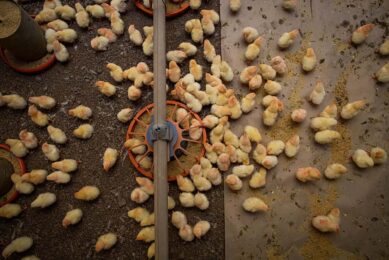Wellhope – A feed fairytale in northern China

Although barely 15 years old, Chinese feed producer Wellhope, headquartered in Shenyang, northern China, is growing very rapidly to become one of the world’s larger feed producers. Shapes of a poultry integration are coming into existence and other activities are also being started up.
By Vincent ter Beek
The sign of Wellhope, to be seen on any of its feed mills, is complex in its simplicity. Two flying birds, together forming a ‘W’. The flying birds, however, also intend to convey an idea of elevation – flying high to oversee the current feed market in China and that of the decades to come in the country’s livestock industry. A little bit of long-term vision is what is needed when embarking on a mission to conquer a large part of the Chinese feed market. Developments are huge and rapid – and size, progress and dynamics are very hard to overestimate.
Jan Cortenbach, chief technical officer at Wellhope, says that within seven years, Wellhope increased its feed production tonnage nearly tenfold. From 250,000 tonnes in the year 2003, the company went to a mindboggling 2.15 million tonnes of feed produced in 2010. Wellhope only started in 1995, as a joint project of seven ambitious young school friends starting out to make premixes from the city of Shenyang, in the agricultural northern Liaoning province. Within 15 years the company grew to consist of 49 feed mills, 47 of which are in China, one in North Korea and one in Nepal.
Range of companies
Wellhope is ideally located to anticipate future growth, Cortenbach says. He expects a major part of future Chinese feed demand to be produced within the country itself. “There are absolutely chances for increasing yield of corn, wheat and soybean crops per hectare. First, privatisation of less efficient state operated companies will enhance this process.
Wellhope is ideally located to anticipate future growth, Cortenbach says. He expects a major part of future Chinese feed demand to be produced within the country itself. “There are absolutely chances for increasing yield of corn, wheat and soybean crops per hectare. First, privatisation of less efficient state operated companies will enhance this process.
Next, the use of more sophisticated grains, e.g. specific varieties of corn for animal feed or silage corn, and genetically modified (GM) varieties. I expect China to allow GM varieties, as the country mainly produces for human consumption. It is key to keep in mind that China would like to maintain its degree of self-sufficiency for human consumption and the use of GM cereals will play an important role in that. This will happen despite the coming into existence of certain rules around several areas.”
“Around Beijing, for instance, no rice is being cultivated; and in northern areas, farmers can only harvest rice once per annum. Hence, this has been replaced by winter wheat and corn. In addition, water supplies will play an important role. Soybeans and corn are increasingly moving to the north – this will imply that animal feed production, and eventually meat production, will move to these areas. In short – Wellhope is located very strategically!”
MORE INFORMATION
Join 31,000+ subscribers
Subscribe to our newsletter to stay updated about all the need-to-know content in the poultry sector, three times a week. Beheer
Beheer








 WP Admin
WP Admin  Bewerk bericht
Bewerk bericht